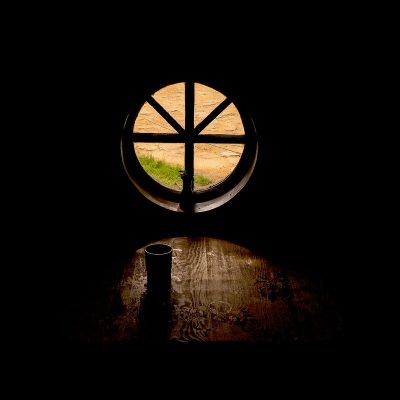Sparks of Vayishlach
Stepping Into The Future

The story in this week’s parsha, of Binyamin’s birth and Rachel’s death, began in last week’s parsha, when Rachel takes the teraphim from her father, Lavan. Before we can even begin to speak about it, we need to answer a basic question. What on earth are teraphim? Lavan and Yaacov refer to them as “gods” (Bereisheit 31:30-32), which makes them sound like idols. And yet, there were teraphim in David Hamelech’s home (Shmuel I 19:13), so it seems unlikely that they were avodah zara.
Rav Shapiro explains that the word teraphim comes from the Hebrew rafeh yadayim, meaning weakened or slackened hands. This refers to the way the teraphim were made, which involved a process of effort followed by rest. They were used for the purpose of telling the future, and the weakened hands also refers to the way a person lives life when under their influence.
The future of the teraphim is the future of the past. We can understand this by imagining a botanist looking at a seed. An expert botanist can hold an unidentified seed in the palm of his hand, and confidently describe exactly what will unfold from that seed in three months, ten months, or two years. He is not a prophet, but he can predict the future because he understands the present so well. The teraphim were tools which predicted the future from the seed of the present. The future the teraphim foretells is the future that happens when we let loose our hands and allow whatever exists currently to naturally unfold.
This was the future the Lavan wanted, and the future the Rachel rejected. She was the first to respond, the first to agree that they needed to leave her father behind. And yet, she was still a daughter. Rav Shapiro tells us that Rachel took the teraphim from her father because she wanted to give him a future. As long as Lavan was following the path of the teraphim, his future was only the past and the present coming to their natural conclusion. By taking away the teraphim Rachel intended to give Lavan the opportunity to create a new future for himself.
Lavan, however, was less than pleased. We can probably relate. We like to plan our futures. We like to walk into what we know. The feeling of breaking away from the past, of facing an unknown and new future doesn’t always feel comfortable. When life does this to us, we don’t always feel like embracing a new future. We can understand Lavan, searching for his teraphim, trying to return to the path he was intending to take.
It was Yaacov, Rachel’s husband, who understood the power of breaking free from what we know. Yaacov was alive in every sense of the word. He grew up as Eisav’s twin, but he went in the opposite direction. Eisav, like Lavan, drew his strength from the natural world. He sold his birthright for a bowl of lentil soup. Lentils are the round circles that symbolize the natural cycle of life. One we are at any point on a circle, it is clear where we are going to go. Once we are born, we are inexorably leading toward death. This is what Eisav gobbled up, and this is how he sustains himself. He draws his strength from a life that is leading toward death.
Yaacov had a different view. Yaacov stepped off the revolving wheel. For Yaacov time is not an endless circle, it is a path toward an ultimate future. Yaacov does not die. Yaacov originates. The birthright did not come to him because it was his due. He originated his connection to it. And Yaacov is the father that instituted for us Maariv, the prayer of the night. Night is the time when things are unclear. When we can’t see where we are going. When there is no sun, following it’s proscribed path, leading us in the right direction. We have a clear obligation to daven Shacharit and Mincha based on the path of the sun in the sky. At night, we obligate ourselves. We make our own path. We step into the path that Yaacov made for us, and we innovate.
The child of Yaacov and Rachel that was born after the incident of the teraphim was Binyamin. For Rachel, his name was Ben-Oni, son of my suffering. The shoresh oni is connected to aven (see Yeshayahu 31:2) and describes power and strength which is used in a way that backfires on the one who used it. In trying to give her father a future, Rachel lost her own. But that was not the end of the story. Yaacov called his son Benyamin, son of my right hand, son of my strength. Binyamin’s birth created a new reality for us as a nation.
Binyamin is the part of us that never did and never will bow to Eisav. He is the part of our nation, and part of our soul which refuses, against all evidence to the contrary, to ever be subjected to the predetermined. From Binyamin came Mordechai, who like his great-grandmother before him, was willing to trust in a future that could not be seen in the present. Mordechai’s seemingly suicidal refusal to bow to Haman created a rebirth for our nation and began the path toward our return to Eretz Yisrael and the rebuilding of the second Beit Hamikdash.
According to the Arizal, Kislev is the month of Binyamin. It is the month when the days are shortest, and the nights are longest. The nature of the world is darkness, but we create light. In Kislev the lights of our menorah illuminate our nights, and light the way for our future.